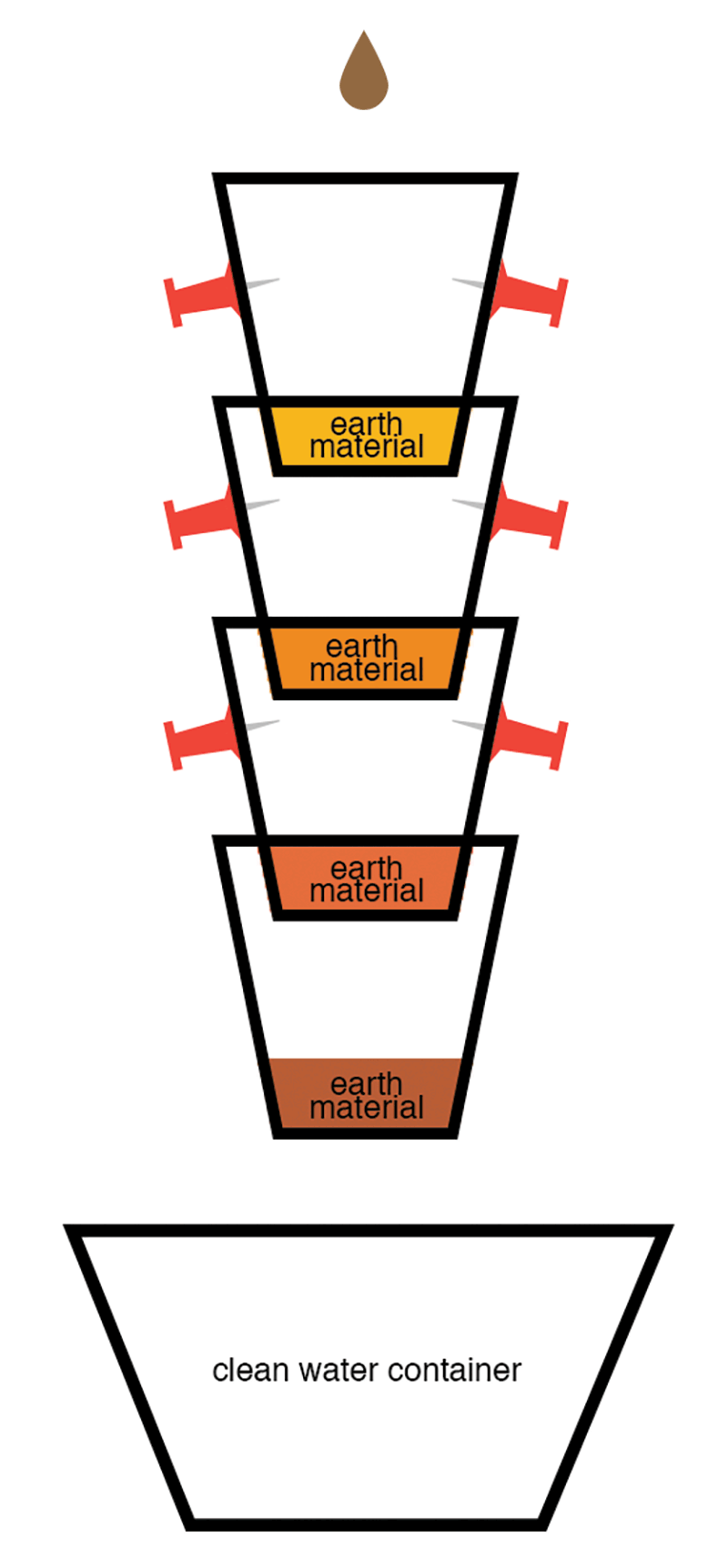Monday’s Lesson: Can You Filter Your Water?
Description
Although improved water supply and distribution are two of the great engineering achievements of the 20th century, the National Academy of Engineering lists "access to clean water" as one of its current worldwide challenges.*
Addressing this challenge requires inspiring the next generation of scientists, engineers, and citizens to tackle clean water issues. In the United States, this challenge is generally part of the civil infrastructure of drinking water and wastewater treatment systems. However, this infrastructure is aging and needs investment and enhancement, requiring political and economic leadership, research and development, and technological innovation. The recent case in Flint, Michigan, has brought national attention to this challenge.
Elementary through secondary students should understand the complexity of local and global water issues as well as the science and engineering of water projects and related careers. They need to be able to evaluate questions such as: How serious is the water challenge? In what ways do human actions affect water systems? How do we measure water quality? What technologies provide clean water?
In the Water SCIENCE (Supporting Collaborative Inquiry, Engineering, and Career Exploration with Water) project funded by the National Science Foundation (NSF), middle school students from southern Arizona, southeastern Pennsylvania, and eastern Massachusetts investigate local water resources through hands-on science and engineering activities, guidance from undergraduate and graduate student mentors, online interaction with STEM professionals, and learning about careers in environmental conservation and engineering. Student activities reflect the real-world challenges faced by water authorities: water scarcity and hardness in Arizona's arid climate, animal waste and agrochemical pollution in Pennsylvania's farming communities, and road runoff and wastewater management in the densely populated urban centers of eastern Massachusetts.
Collaborating in iSENSE
Students visualize their Water SCIENCE data in iSENSE, a free, interactive instructional website for collecting, sharing, and visualizing scientific data, co-developed by Machine Science and the University of Massachusetts Lowell and funded by NSF. Teachers and students from different schools can explore data from other classes or from a trusted outside source.
Try it out

Figure 1. A stackable filtration system using different filter materials.
In the "Can I filter my water?" activity, students filter dirty water. Following the Design-Build-Test engineering process, they evaluate natural water filtration materials, design and build a stackable water filter, and test the effectiveness of their designs.
- Create dirty water by adding potting soil, water-based clay, oil, vinegar, and garlic powder (for odor) to clean water.
- Fill and label four clear plastic cups with different filter materials (e.g., sand, activated carbon, cheesecloth, coffee filter) (Figure 1).
- Using a pin or scissors, punch small holes in the base of the cups so water can pass through them.
- Insert two pushpins into opposite vertical sides of each cup, high enough so water will not leak out.
- Sketch the design, deciding how to stack the filters in a gravity-driven filtration sequence.
- Prime the system with clean water, then run dirty water through the filters.
- Evaluate results by assessing reduction in water turbidity and odor.
Additional hints and background information are available in the teacher guide.
Sign up for a free account on the Innovative Technology in Science Inquiry portal to create classes, assign this and other Water SCIENCE activities to your students, and view their work.
Carolyn Staudt (cstaudt@concord.org) directs the Graph Literacy project.
Melinda Daniels (mdaniels@stroudcenter.org) is a research scientist at the Stroud Water Research Center.
This material is based upon work supported by the National Science Foundation under grant DRL-1433761. Any opinions, findings, and conclusions or recommendations expressed in this material are those of the author(s) and do not necessarily reflect the views of the National Science Foundation.

Author and publisher information is provided below. Note that many publishers charge a fee or membership for full access. Permission/access must be requested through the publisher or author directly.